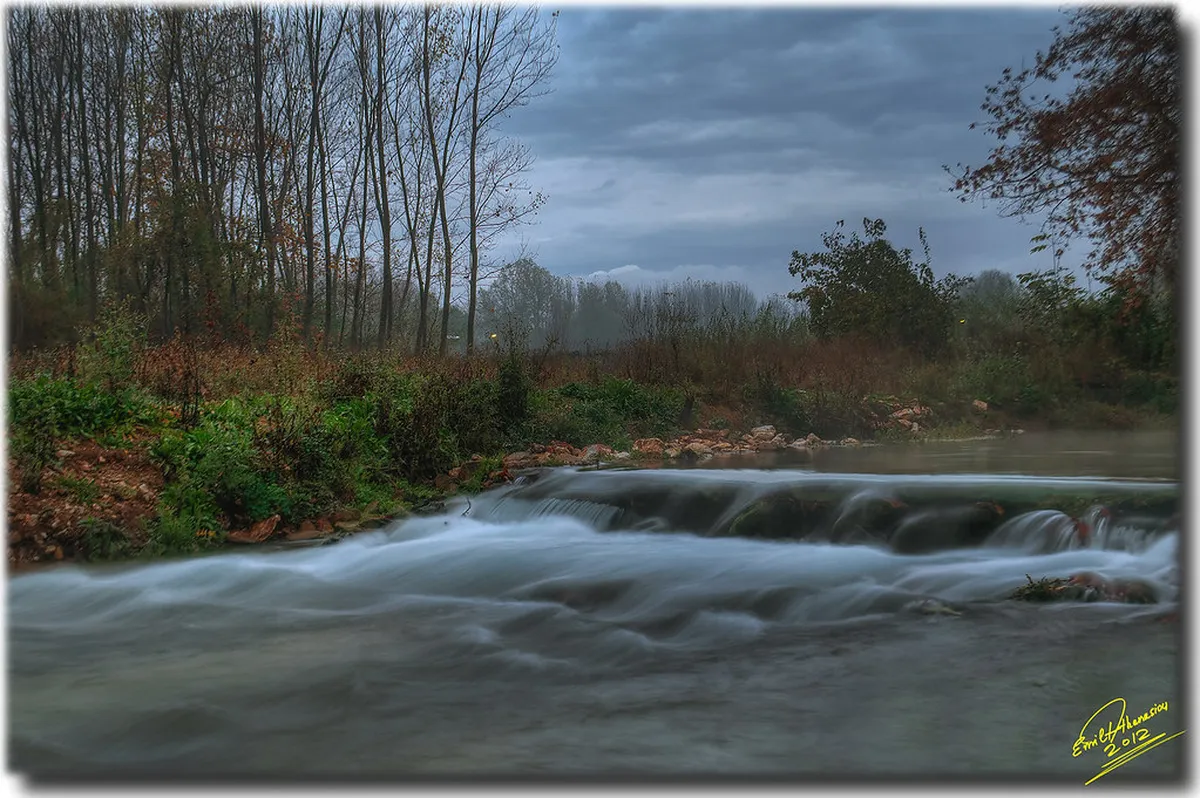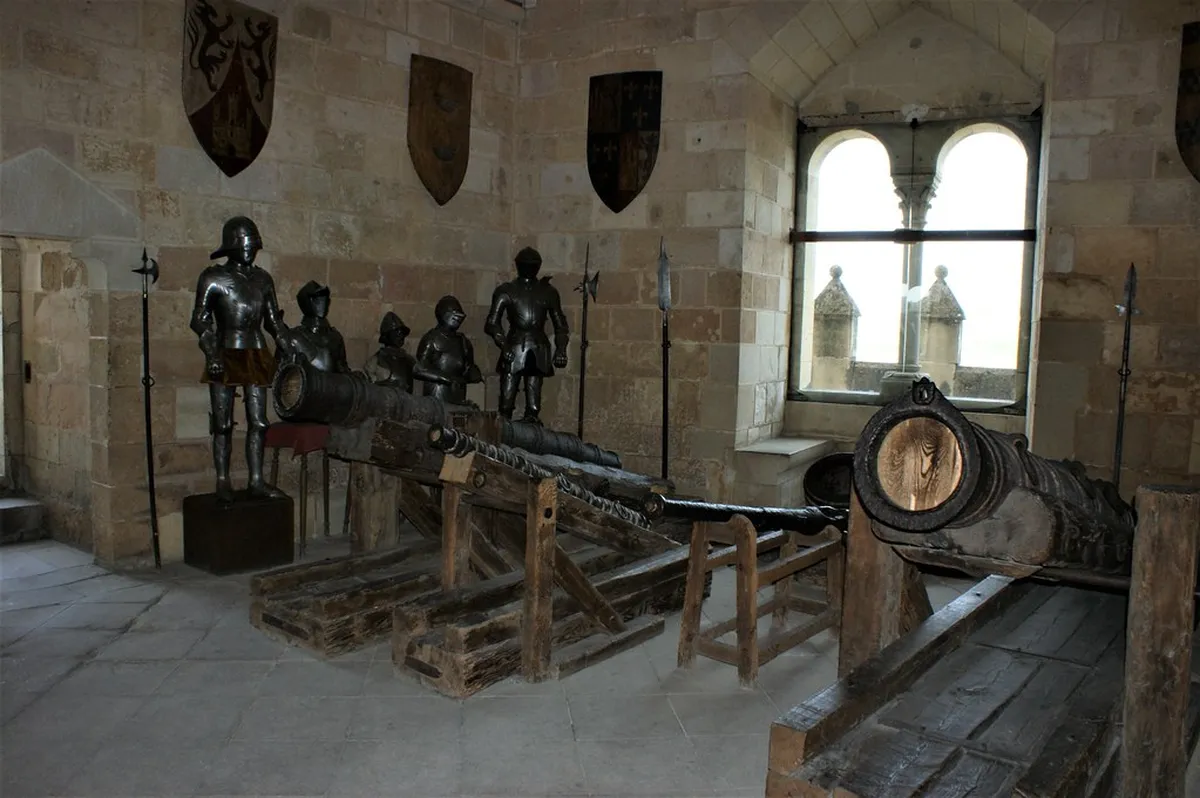The Ultimate Dublin Itinerary for First-Timers in 2025
Welcome to Dublin, a city brimming with history, vibrant culture, and unparalleled charm. Planning a trip to this amazing capital can feel overwhelming at first. This comprehensive guide provides an ideal Dublin itinerary for first-timers visiting in 2025. We cover everything from iconic landmarks to hidden gems.
Our goal is to help you create an unforgettable adventure. You will find practical advice on transportation, accommodation, and dining. We also share insider tips to maximize your experience. Get ready to explore historic castles, lively pubs, and world-class museums. This Dublin itinerary ensures you see the best of the city. We highlight top attractions and cultural experiences.
Whether you have a few days or a full week, this guide has you covered. Learn how to navigate Dublin efficiently and immerse yourself in its unique atmosphere. Discover how to make the most of your first visit to Ireland’s capital. Begin your journey to a truly memorable trip today. Find the best time to visit Dublin for your travel style.
Planning Your Dublin Adventure: Best Time & Budget Tips
Plan this trip faster with our free online itinerary maker. Get a personalized day-by-day plan in minutes.
Careful planning ensures a smooth and enjoyable Dublin itinerary for first-timers. The time of year significantly impacts your experience. Dublin experiences four distinct seasons. Each offers unique advantages for visitors.
Spring (April-May) provides mild weather and blooming parks. Temperatures average 10-15°C (50-59°F). Crowds are moderate, and hotel prices are reasonable. Summer (June-August) is peak season with long daylight hours. Expect lively festivals and average temperatures of 18-20°C (64-68°F). Attractions will be crowded, and prices for accommodation and flights surge. Booking well in advance is essential for summer 2025 travel.
Autumn (September-October) offers crisp air and beautiful fall foliage. Temperatures range from 10-15°C (50-59°F). Crowds thin out after the summer rush. Winter (November-March) brings colder temperatures, around 5-8°C (41-46°F). Expect festive Christmas markets and cozy pub experiences. This is an ideal time for budget travelers. It offers lower prices and fewer tourists.
Budgeting for your first Dublin itinerary is crucial. A mid-range daily budget for 2025 is €100-€150 per person. This includes accommodation, food, attractions, and transport. Accommodation takes up a significant portion of this budget. Consider staying in hostels or guesthouses for cost savings. Eating at local eateries and cooking some meals also helps. Look for free attractions like museums. The Dublin budget tips article provides more details. It offers practical ways to save money.
Transportation costs are manageable with a Leap Visitor Card. This card offers unlimited travel on most public transport. A 3-day card costs around €19.50. A 7-day card is approximately €30. This is cheaper than individual tickets. Plan your attractions to group them geographically. This minimizes travel time and costs. Always carry some cash for smaller purchases. Many places accept cards, but cash is sometimes convenient.
Always book your flights and accommodation well in advance. Especially for high season in 2025. Early bookings often secure better rates. Compare prices across different booking platforms. Consider package deals that combine flights and hotels. Travel insurance is also a smart investment. It protects against unforeseen circumstances. This includes trip cancellations or medical emergencies. Research different policy options carefully.
Seasonal Weather Considerations in Dublin
- Spring: Mild, occasional showers. Pack layers and a light rain jacket.
- Summer: Warmest, longest days. Lighter clothing, but a cardigan for evenings.
- Autumn: Cool, more rain. Waterproof jacket and comfortable walking shoes.
- Winter: Cold, chances of frost. Warm coat, hat, gloves, and waterproof footwear.
Checking the local forecast closer to your travel date is always recommended. Dublin weather can be unpredictable. Being prepared for varying conditions enhances your trip. Your comfort levels greatly impact enjoyment. Plan your wardrobe accordingly for any season.
Getting Around Dublin: Transport & Accessibility Insights
Navigating Dublin for first-timers is surprisingly straightforward. The city center is quite walkable. Many major attractions are close to each other. However, public transport is excellent for longer distances. Understanding your options makes exploring easier. It also enhances your overall Dublin itinerary.
Dublin boasts an efficient public transportation network. This includes buses, the Luas tram system, and DART trains. The bus network is extensive and covers almost the entire city. It operates from early morning until late at night. Night buses run on weekends. The Luas is a popular tram service. It has two main lines, the Green and the Red. These connect key areas. The DART (Dublin Area Rapid Transit) hugs the coast. It offers scenic routes to coastal towns. Consider a Leap Visitor Card for convenience.
A Leap Visitor Card is highly recommended for tourists. It offers unlimited travel on buses, Luas, DART, and some commuter rail services. You can purchase cards for 1, 3, or 7 days. These are available at Dublin Airport and city center shops. It saves money compared to buying single tickets. Simply tap on and off for Luas and DART. Tap on when boarding buses. This makes travel seamless.
Airport transfers are simple from Dublin Airport (DUB). The Aircoach and Dublin Express are popular private bus services. They offer direct routes to the city center. Aircoach runs 24/7. Both services provide comfortable seating and luggage storage. A single fare is typically €8-€10. Public Dublin Bus routes also serve the airport. They offer a cheaper alternative. Taxis are always available outside the terminal. They offer door-to-door service. However, they are more expensive.
Walking is often the best way to experience Dublin's charm. Many historic streets are pedestrian-friendly. Wear comfortable shoes for extensive sightseeing. You will easily cover major landmarks on foot. Cycling is also an option. Dublin Bikes is a public bike-sharing scheme. Stations are located throughout the city. A 3-day pass costs around €5. Always be aware of traffic and designated bike lanes.
Accessibility for Travelers in Dublin (2025)
- Buses: Most Dublin Bus vehicles are wheelchair accessible.
- Luas: All trams are fully accessible with level boarding.
- DART: Stations have ramps or lifts, and trains are accessible.
- Attractions: Many major sites offer ramps, lifts, and accessible facilities. Check individual websites for details.
Taxis can accommodate folding wheelchairs. However, specialized accessible taxis might require advance booking. Dublin strives to be inclusive for all visitors. Planning ahead will help. Contact specific venues for their latest accessibility information. This ensures a comfortable and stress-free trip for everyone.
Day 1: Historic Heart & Cultural Gems on Your Dublin Itinerary
Begin your Dublin itinerary for first-timers in the city's historic core. This day focuses on ancient landmarks and profound learning experiences. Wear comfortable walking shoes. You will cover significant ground on foot today. Start your exploration early to beat the crowds.
Start your morning at Trinity College Dublin. Marvel at its stunning architecture. The highlight is the historic Long Room library. It houses the magnificent Book of Kells. Booking your tickets online in advance is essential. Timed entry ensures a smoother visit. Allocate at least 1.5-2 hours here. The campus itself is beautiful for a stroll. Student-led tours offer insightful historical context.
Next, walk to Dublin Castle. This complex served as the seat of English, and later British, rule in Ireland for centuries. Explore the State Apartments, the Chapel Royal, and the Chester Beatty Library. The underground Viking and medieval excavations are particularly fascinating. Consider a guided tour to fully appreciate its history. Allocate 2-3 hours for a comprehensive visit. The grounds are lovely for a leisurely walk.
For lunch, find a cozy spot near Dame Street. Many traditional pubs offer excellent pub grub. Try a hearty Irish stew or a classic fish and chips. This fuels your afternoon adventures. It also provides a taste of local cuisine. Look for places popular with locals for authentic flavors.
In the afternoon, visit Christ Church Cathedral. It is one of Dublin's two medieval cathedrals. Explore its crypt, which is the largest in Ireland. The architecture is breathtaking. Just a short walk away is Dublinia. This interactive museum brings Viking and Medieval Dublin to life. A bridge connects Dublinia to Christ Church. This makes it an easy two-part visit. Budget 1-1.5 hours for each attraction.
As evening approaches, head towards the vibrant Temple Bar area. This iconic district is known for its lively pubs, street performers, and cultural venues. While touristy, it offers an undeniable energy. Enjoy a pint of Guinness and listen to live traditional Irish music. Be aware that drinks can be pricier here. Consider venturing slightly outside Temple Bar for more local pub experiences. Our guide to best pubs in Dublin for first-timers offers great alternatives.
Evening Entertainment in Temple Bar
- Live Music: Many pubs feature traditional Irish music sessions nightly.
- Dining: Restaurants cater to various tastes, from traditional to international.
- Street Performers: Enjoy buskers and artists entertaining crowds.
- Cultural Venues: Check out the Project Arts Centre for contemporary performances.
Remember to practice good safety, especially in crowded areas. Keep an eye on your belongings. Enjoy the festive atmosphere responsibly. Temple Bar is best experienced in the early evening. This avoids the late-night rush. It lets you enjoy the unique ambiance fully.
Day 2: Iconic Brews & Irish History on Your First-Time Dublin Itinerary
Day two on your Dublin itinerary for first-timers dives into iconic Irish traditions. It explores a darker chapter of Irish history. Prepare for a sensory experience and profound reflections. This combination offers a balanced view of Dublin. It highlights both joy and resilience.
Begin your morning at the world-famous Guinness Storehouse. This is a must-do attraction for many visitors. Learn about the history of Guinness beer. Explore its brewing process across seven floors. The self-guided tour culminates at the Gravity Bar. Here, you enjoy a complimentary pint with panoramic city views. Booking tickets online in advance is crucial. Timed entry slots fill up quickly, especially in 2025. Allocate 2-3 hours for this immersive experience.
For lunch, grab a bite near the Guinness Storehouse. Many local cafes and pubs offer delicious options. Some even incorporate Guinness into their dishes. Consider trying traditional Irish soda bread. It pairs perfectly with hearty soups. This provides a taste of local cuisine. It prepares you for the afternoon’s historical journey.
In the afternoon, head to Kilmainham Gaol. This former prison played a pivotal role in Irish history. Many Irish revolutionaries and political prisoners were held here. The guided tour is incredibly moving and informative. It details the struggles for Irish independence. This site offers powerful insights into Ireland's past. Tickets sell out weeks in advance. Book your spot online as soon as possible. Allocate 2-2.5 hours for the tour and museum. It is a profoundly impactful experience.
Alternatively, if time allows, visit the Jameson Distillery Bow St. It offers a different but equally engaging experience. Learn about Irish whiskey production. Enjoy a tasting session. This is located near Smithfield. It offers another taste of Ireland's famed beverages. This makes a great alternative to Guinness or an additional stop. Explore different spirits of Ireland.
Later in the day, consider the National Museum of Ireland – Archaeology. It offers free admission. This museum showcases incredible prehistoric gold artifacts and Viking treasures. It provides deeper context to Ireland's ancient past. It is conveniently located near central Dublin. This allows easy access. Discover fascinating exhibits at your own pace. This offers a peaceful end to a day of exploration.
Evening Dining and Entertainment
- Traditional Irish Dinner: Seek out restaurants serving boxty, colcannon, or coddle. Our guide to best Irish food helps.
- Live Music Pubs: Explore pubs outside Temple Bar for a more authentic atmosphere.
- Theater: Check listings for plays at the Abbey or Gate Theatre for a cultural evening.
- Casual Drinks: Enjoy a relaxed pint in a local pub, soaking in the friendly vibe.
Remember to make dinner reservations, especially on weekends. Dublin's culinary scene is thriving. Popular spots can fill up quickly. Enjoy the vibrant evening atmosphere. Reflect on the rich history discovered throughout your day. This combination creates lasting memories.
Day 3: Parks, Shopping & Local Flavors on Your Dublin City Exploration
On your third day, immerse yourself in Dublin's green spaces and bustling streets. This part of your Dublin itinerary for first-timers offers a relaxed pace. It includes opportunities for leisure, shopping, and local encounters. Discover the city's contemporary pulse while enjoying its natural beauty.
Start your morning with a refreshing stroll through St. Stephen's Green. This Victorian park is an oasis in the city center. Enjoy the manicured gardens, serene lake, and diverse birdlife. Find a quiet bench for people-watching. It is a perfect spot for a leisurely start. Spend about an hour enjoying this beautiful green space. It is a peaceful contrast to yesterday's history.
After the park, head to Grafton Street for some retail therapy. This iconic shopping street is pedestrianized. It features high-end boutiques, international brands, and street performers. Enjoy the lively atmosphere. Browse for souvenirs or indulge in some luxury shopping. Don't miss the famous Brown Thomas department store. This area is perfect for gift hunting. You might discover unique Irish crafts.
Wander down to the Ha'penny Bridge. This picturesque cast-iron bridge spans the River Liffey. It connects the north and south sides of Dublin. It is a popular spot for photos. Cross the bridge and explore the north side. This area offers different shops and cafes. Enjoy the views along the river. Take your time to capture memories.
For lunch, explore the vibrant culinary scene around George's Street Arcade. This Victorian market offers an eclectic mix of food stalls. You will find vintage clothing, and quirky shops. Try street food from various international cuisines. It provides a lively and affordable dining experience. This area is great for unique finds. It also supports local artisans.
In the afternoon, delve deeper into local culture. Consider a free Dublin walking tour. These tours are usually tip-based. They offer excellent insights into Dublin's history and folklore. Local guides share captivating stories. You will discover hidden alleys and hear fascinating anecdotes. It's a fantastic way to understand the city's character. Look for tours departing from popular spots like the Spire. They typically last 2-3 hours.
Shopping and Souvenir Tips for Dublin
- Grafton Street: High-street fashion, luxury brands, department stores.
- George's Street Arcade: Independent boutiques, vintage, unique gifts, food stalls.
- Powerscourt Centre: Upscale boutiques, jewelers, cafes in a stunning Georgian building.
- Local Markets: Offer artisanal products, fresh produce, and local crafts.
- Souvenirs: Look for Aran sweaters, Celtic jewelry, or local whiskey and food products.
Support local businesses when possible. You will find many authentic Irish products. This provides meaningful keepsakes. It also contributes to the local economy. Enjoy the relaxed pace of your final full day in Dublin. Embrace the warmth of Irish hospitality. You will find treasures to take home. This completes your initial exploration of Dublin.
Extending Your Trip: Day Trips from Dublin for First-Timers
If your Dublin itinerary for first-timers allows for more time, consider a day trip. Ireland offers breathtaking landscapes and historical sites. These are easily accessible from the capital. Expanding your exploration beyond Dublin city limits enriches your travel experience. It provides diverse perspectives on the country's beauty and heritage.
The Cliffs of Moher are arguably Ireland's most famous natural attraction. While a longer day trip (3-4 hours drive each way), they are absolutely worth it. Many tour operators offer full-day excursions from Dublin. These often include stops in quaint villages or other scenic spots. Witness the dramatic cliffs plunging into the Atlantic Ocean. The views are absolutely stunning. This is a bucket-list destination for many visitors. Book your tour well in advance. Consider seasonal variations in weather for the best views in 2025.
For a closer and equally beautiful option, explore the Wicklow Mountains. Known as the
Frequently Asked Questions
How many days should a first-timer spend on a Dublin itinerary?
A minimum of 3 to 4 full days is ideal for a first-time Dublin itinerary. This timeframe allows you to experience the main attractions comfortably. You can visit Trinity College, Guinness Storehouse, and Dublin Castle. It also leaves time for exploring vibrant neighborhoods like Temple Bar. If you wish to include a day trip, plan for 5-6 days. This provides a more relaxed pace. It also allows deeper immersion in Irish culture. Consider your travel style and interests when deciding. More days always mean more exploration. A longer visit lets you discover hidden gems. It allows time for a Dublin day trip.
What is the best way to save money on a Dublin trip in 2025?
Saving money on your Dublin trip in 2025 involves smart planning. Opt for free attractions like the National Museum of Ireland. Walk or use the Leap Visitor Card for public transport instead of taxis. Eat at local pubs and markets, avoiding overly touristy restaurants. Consider self-catering accommodation, like Airbnbs, to cook some meals. Travel during the shoulder seasons (spring or autumn) for lower prices. Look for special deals on flights and hotels well in advance. Pack snacks and a reusable water bottle. Compare prices for attraction tickets online. Our budget guide to Dublin offers more helpful tips.
Are Dublin's main attractions walkable for first-timers?
Yes, many of Dublin's main attractions are quite walkable for first-timers. The city center is compact and pedestrian-friendly. Sites like Trinity College, Dublin Castle, and Christ Church Cathedral are close. Grafton Street and St. Stephen's Green are also easily reached on foot. However, attractions like the Guinness Storehouse and Kilmainham Gaol are slightly further. These may require a short bus or tram ride. Wear comfortable shoes as you will be doing a lot of walking. Plan your route to minimize travel time. Utilize Dublin's excellent public transport for longer distances. This makes exploring convenient. A free walking tour can also cover much ground.
What are some unique cultural experiences in Dublin?
Dublin offers many unique cultural experiences beyond the typical sights. Attend a traditional Irish music session (a 'seisiún') in a local pub. Look for pubs slightly outside Temple Bar for a more authentic vibe. Visit the Little Museum of Dublin for a charming, intimate look at the city's history. Explore the Chester Beatty Library within Dublin Castle. It features exquisite manuscripts and art. Engage with local storytellers at events or specialized tours. Visit the GPO Witness History Museum. It highlights key moments in Irish history. These experiences offer genuine insights into Irish heritage. Experience the rich tapestry of Irish traditions. You might also enjoy Dublin nightlife for beginners for cultural insights.
Is Dublin safe for solo female travelers in 2025?
Dublin is generally very safe for solo female travelers in 2025. Like any major city, exercise common sense and stay aware of your surroundings. Stick to well-lit, populated areas, especially at night. Utilize reputable transportation options. Avoid walking alone in secluded areas after dark. Keep valuables secure and out of sight. Most locals are friendly and helpful. Do not hesitate to ask for directions or assistance. Research your accommodation carefully. Ensure it is in a safe and reputable neighborhood. Trust your instincts. Taking basic precautions will ensure a safe and enjoyable trip. Our Dublin travel safety tips provide more specific guidance.
What essential Irish food should I try on my first Dublin trip?
On your first Dublin trip, sampling traditional Irish food is a must. Start with a hearty Irish stew, a comforting classic. Try a full Irish breakfast for an authentic morning meal. Don't miss coddle, a Dublin specialty with sausages and bacon. Boxty, a potato pancake, comes in various forms. For a sweet treat, try Barmbrack, a fruit loaf. Of course, a pint of Guinness is essential. Explore local pubs for the best culinary experiences. Many offer fresh seafood too. Our guide to the best Irish food suggests specific dishes and places. Enjoy the rich flavors of Ireland.
Embarking on a Dublin itinerary for first-timers promises an incredible journey. This guide has equipped you with essential information. You can now confidently explore Dublin's rich history, vibrant culture, and lively atmosphere. From iconic landmarks to hidden local spots, your adventure awaits. Remember to plan your accommodation and transport wisely for a smooth trip. Consider booking popular attractions like the Guinness Storehouse and Kilmainham Gaol in advance. This saves time and ensures entry, especially in 2025. Our detailed tips help you make the most of every moment.
Dublin is a city that captures hearts with its friendly people and captivating stories. Embrace the warmth of Irish hospitality. Enjoy live music in cozy pubs. Discover ancient tales woven into cobblestone streets. Don't forget to savor the delicious local cuisine. Whether you have three days or an extended stay, this itinerary offers a solid foundation. It helps create lasting memories. Your first visit to Dublin will undoubtedly be unforgettable. Get ready to fall in love with Ireland’s capital.
Start planning your dream Dublin adventure today. Utilize the resources provided. Use our comprehensive guides to fine-tune your itinerary. Explore more about where to stay in Dublin for your needs. We are here to help you craft the perfect trip. Safe travels and enjoy your extraordinary journey to Dublin!
Key Takeaways
- Book popular Dublin attractions like Guinness Storehouse and Kilmainham Gaol in advance to secure tickets.
- Purchase a Leap Visitor Card for unlimited travel on Dublin's public transport, saving money and hassle.
- Allocate at least 3-4 days for your first-time Dublin itinerary to cover major sights and experience local culture.
- Embrace Dublin's walkability but use buses/Luas for longer distances; wear comfortable shoes daily.
- Explore diverse dining options from traditional pubs to modern cafes and unique market stalls for authentic flavors.
- Consider a day trip to the Wicklow Mountains or Cliffs of Moher if your schedule allows for extended exploration.



